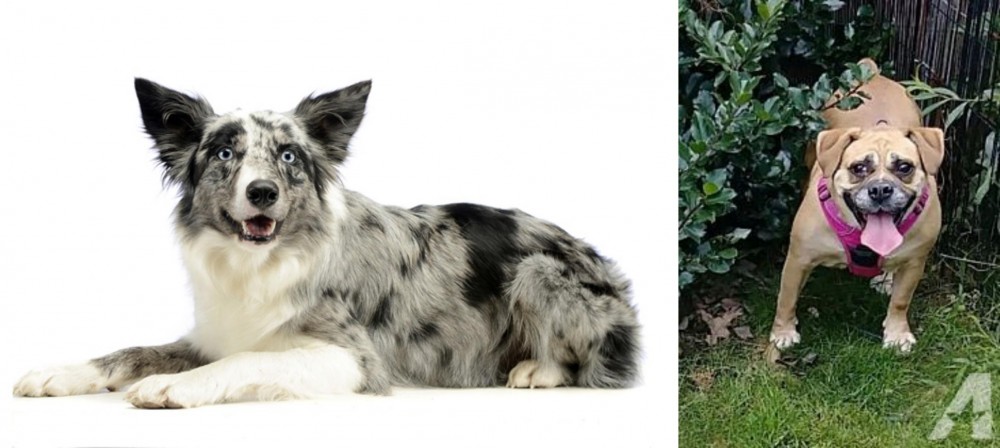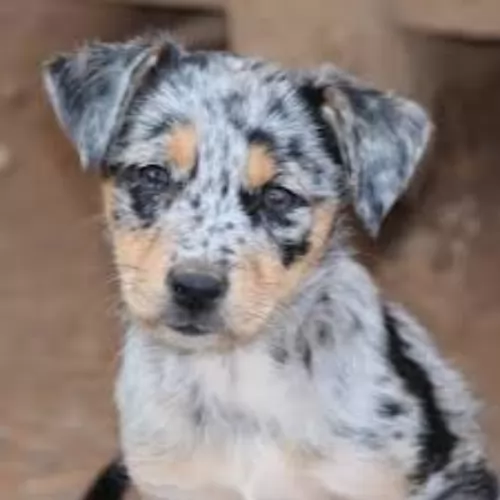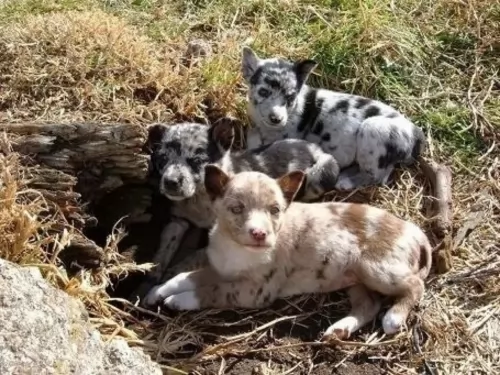 Koolie is originated from Australia but Beabull is originated from United States. Koolie may grow 20 cm / 8 inches higher than Beabull. Koolie may weigh 11 kg / 25 pounds more than Beabull. Koolie may live 7 years more than Beabull. Both Koolie and Beabull has same litter size. Koolie requires Low Maintenance. But Beabull requires Moderate Maintenance
Koolie is originated from Australia but Beabull is originated from United States. Koolie may grow 20 cm / 8 inches higher than Beabull. Koolie may weigh 11 kg / 25 pounds more than Beabull. Koolie may live 7 years more than Beabull. Both Koolie and Beabull has same litter size. Koolie requires Low Maintenance. But Beabull requires Moderate Maintenance
Basic Information
Group:
Working dog
Companion dog
undefined
Australia
United States
Life Span:
12 - 18 Years
8 - 11 Years
Other Names:
German Koolie
None
Colors Available:
merle pattern, Red, black
white, brown brindle
Coat:
Shortish to medium
have short, coarse hair that tends to shed a lot
Shedding:
Moderate
Constant
Temperament:
Affectionate, Alert, Cheerful, Courageous, Curious, Energetic, Friendly, Independent, Intelligent, Lively, Loving, Loyal, Outgoing, Playful, Protective, Responsive, Social, Stubborn, Territorial
Independent, Loving, Loyal, Playful
Grooming:
Low Maintenance
Moderate Maintenance
Trainability:
Easy
Moderate
New Owners Friendly:
Yes
Yes
History
 The Koolie's ancestors were both the smooth coated blue merle Collie as well as the Black and Tan Collie. The dog hails from Australia.
The Koolie's ancestors were both the smooth coated blue merle Collie as well as the Black and Tan Collie. The dog hails from Australia.
Looking much like the Heeler dog, the Koolie is thought to have got its name from German immigrants to Australia who couldn’t pronounce the name ‘collie’ properly, so the name came out as Koolie. The Koolie of today is a product of a cross between the German Koolie and the Australian Dingo.
The dog has been around for a long time and in 2000, the Koolie Club of Australia was formed. It was in 2004 that the Koolie was recognized by the Australian Sporting Registrar. In May 2006, the Stockdog Committee of the Australian Shepherd Club of America accepted the Koolie as a recognized and accepted herding breed.
The Beabull is known as a designer breed rather than a purebred. The Beabull is a cross between a Beagle and an English Bulldog. This breed is a loving dog, playful and physically strong. They are independent and can be stubborn. Their origins are not well documented, but it is thought they were developed about 20 years ago. Although not recognized by the American Kennel Club because they are not purebred dogs
Description
 Known also as the German Koolie or German Collie, the Koolie is a working- or herding dog standing at between 40 – 60cm in height and weighing up to 24kg.
Known also as the German Koolie or German Collie, the Koolie is a working- or herding dog standing at between 40 – 60cm in height and weighing up to 24kg.
The Koolie's coat is a merle coat pattern in red or black and possibly with some tan and is mostly short and smooth, though it can be medium length too. Depending on the coat color – red or black – the nose and eyes can be either brown or black, although eye color can also be blue or yellowish.
Temperament:
The Koolie is such a wonderful pet who has some excellent characteristics to his name. He is active, energetic, fun, clever, friendly and playful, but if you have him trained and socialized he becomes even more of a great family pet. He is intelligent too and will require an owner who is steady, firm, fair and consistent. You wouldn't call him an aggressive dog
The first generations of the Beabulls are a 50-50 mix, but most of the breed today are multigenerational dogs. This means a Beabull is mixed with another Beabull to try to create a purebred over time. Most of the Beabulls are a mixture and are very unpredictable in their looks and characteristics, depending upon which of the original parent breeds they favor most.
Many will retain the wrinkles, short legs, underbite and short tail of the Bulldog. Others will have the long droopy ears and long muzzles of the Beagle. Most will have coarse, short coats and shed quite a bit. They are medium to large depending upon which size Beagle is used in the crossing.
Characteristics
 Many people today like the idea of a ‘wild’ animal as a pet, and the Koolie, with his Dingo ancestry, can be a challenging dog breed to keep. People eventually blame these animals for having a poor temperament – meantime all they are essentially, are high-energy animals.
Many people today like the idea of a ‘wild’ animal as a pet, and the Koolie, with his Dingo ancestry, can be a challenging dog breed to keep. People eventually blame these animals for having a poor temperament – meantime all they are essentially, are high-energy animals.
If you keep a Koolie, it will be better if you were a firm, kind, patient, consistent dog owner who understands the special needs of these kinds of dogs. They’re an energetic, care-free animals who will do better on a large property or farm as he is lively and will need a good deal of exercise.
He is quite capable of being a splendid pet with training and socialization and will settle down well to family life when he is loved and cared for.
1.Children friendliness – Very good with children.
2.Special talents intelligent and many with a great sense of smell.
3.Adaptability – They can live anywhere in an apartment or a home with a yard.
4.Learning ability – Very intelligent but with a stubborn, independent streak that is inherent in both parental breeds.
Health Problems
 The Koolie is a long-lived dog and there are records of it being able to reach 18 years of age. Because they have a diverse gene pool, you won’t find many genetic problems with this dog.
The Koolie is a long-lived dog and there are records of it being able to reach 18 years of age. Because they have a diverse gene pool, you won’t find many genetic problems with this dog.
It is always wise when you’re the owner of a dog, to look out for his health and wellbeing -
Vaccination:
This is to prevent your Koolie picking up fatal diseases such as distemper and parvo-virus. Dogs can be vaccinated from 6 weeks of age for protection.
Parasites:
Working dogs like the Koolie are susceptible to parasites such as tapeworm. Worming of your dog can be included in your vet visit. Dogs with worms may show tell-tale signs such as being pot bellied, very pale gums, anemia and a dull, thinned coat.
A look at his droppings may reveal white segments or worms. Fleas are another kind of parasite and they breed quickly in warm months. Mange is a skin disease caused by small parasitic mites which can actually live inside the hair follicles of dogs. Veterinary treatment will be required.
Heat Stroke:
This is when your pet’s temperature rises out of control. Dogs pant to reduce their body temperature so a dog puffing heavily is putting in extra work to reduce his body temperature.
Never leave you pet in a boiling hot car as the body becomes weak and he has difficulty with breathing. Without immediate treatment, the dog will collapse and die.
Although most Beabulls will not have inherited health problems there are some issues they are all prone to:
• Bloat – can be fatal if not addressed immediately – inverted digestive organs.
• Hip Dysplasia – can cause lameness.
• Canine Disk Disease – can cause paralysis, loss of legs.
• Hypothyroidism
• Ear infections – keep them clean.
• Patellar Luxation – floating kneecaps – can cause lameness.
• Reverse Sneezing
Caring The Pet
Training:
 The Koolie is an intelligent dog that will benefit from training and socialization to make him obedient and able to cope in diverse situations.
The Koolie is an intelligent dog that will benefit from training and socialization to make him obedient and able to cope in diverse situations.
Exercise:
These dogs show an untiring enthusiasm for exercise and work and wherever you live, you will need to ensure that he gets regular exercise.
Diet:
Only the very best - both home-made and commercially manufactured food - will be good enough for this energetic dog. Good quality food ensures health and longevity. Always see that there is a constant supply of fresh, cool water.
Relaxing Time:
Make sure that your dog has a warm, dry place to sleep inside and that when outside, he has a cool, sheltered spot from the sun.
1.Feeding the puppy – Don’t overfeed due to tendency for obesity and don’t feed right before or after exercise due to threat of bloat. Feed 3-4 meals per day a total of 1.5 cups in a day.
2.Feeding the adult - Don’t overfeed due to tendency for obesity and don’t feed right before or after exercise due to threat of bloat. Feed 3-4 meals per day a total of 3 cups in a day.
3.Points for Good Health no hereditary issues
4. Games and Exercises – both the laziness of the Bulldog and the scent driven energy or the Beagle can be seen in the Beabull. They have short bursts of the Beagles hyperness. Enjoy playing fetch and participating in agility. They need a daily 45-60 minute walk.
Comparison with other breeds
- Koolie vs English Bulldog - Breed Comparison
- Koolie vs German Shepherd - Breed Comparison
- Koolie vs Golden Retriever - Breed Comparison
- Koolie vs Labrador Retriever - Breed Comparison
- Koolie vs West Highland White Terrier - Breed Comparison
- Koolie vs French Bulldog - Breed Comparison
- Koolie vs Beagle - Breed Comparison
- Koolie vs Yorkshire Terrier - Breed Comparison
- Koolie vs Poodle - Breed Comparison
- Koolie vs Rottweiler - Breed Comparison
- Koolie vs Boxer - Breed Comparison
- Koolie vs English Pointer - Breed Comparison
- Koolie vs Siberian Husky - Breed Comparison
- Koolie vs Doberman Pinscher - Breed Comparison
- Koolie vs American Bully - Breed Comparison
- Koolie vs Abruzzenhund - Breed Comparison
- Koolie vs Affenpinscher - Breed Comparison
- Koolie vs Afghan Hound - Breed Comparison
- Koolie vs Aidi - Breed Comparison
- Koolie vs Airedale Terrier - Breed Comparison
- Koolie vs Akbash Dog - Breed Comparison
- Koolie vs Akita - Breed Comparison
- Koolie vs Africanis - Breed Comparison
- Koolie vs Askal - Breed Comparison
- Koolie vs Atlas Terrier - Breed Comparison
- Beabull vs English Bulldog - Breed Comparison
- Beabull vs German Shepherd - Breed Comparison
- Beabull vs Golden Retriever - Breed Comparison
- Beabull vs Labrador Retriever - Breed Comparison
- Beabull vs West Highland White Terrier - Breed Comparison
- Beabull vs French Bulldog - Breed Comparison
- Beabull vs Beagle - Breed Comparison
- Beabull vs Yorkshire Terrier - Breed Comparison
- Beabull vs Poodle - Breed Comparison
- Beabull vs Rottweiler - Breed Comparison
- Beabull vs Boxer - Breed Comparison
- Beabull vs English Pointer - Breed Comparison
- Beabull vs Siberian Husky - Breed Comparison
- Beabull vs Doberman Pinscher - Breed Comparison
- Beabull vs American Bully - Breed Comparison
- Beabull vs Abruzzenhund - Breed Comparison
- Beabull vs Affenpinscher - Breed Comparison
- Beabull vs Afghan Hound - Breed Comparison
- Beabull vs Aidi - Breed Comparison
- Beabull vs Airedale Terrier - Breed Comparison
- Beabull vs Akbash Dog - Breed Comparison
- Beabull vs Akita - Breed Comparison
- Beabull vs Africanis - Breed Comparison
- Beabull vs Askal - Breed Comparison
- Beabull vs Atlas Terrier - Breed Comparison
 Petzlover
Petzlover Koolie is originated from Australia but Beabull is originated from United States. Koolie may grow 20 cm / 8 inches higher than Beabull. Koolie may weigh 11 kg / 25 pounds more than Beabull. Koolie may live 7 years more than Beabull. Both Koolie and Beabull has same litter size. Koolie requires Low Maintenance. But Beabull requires Moderate Maintenance
Koolie is originated from Australia but Beabull is originated from United States. Koolie may grow 20 cm / 8 inches higher than Beabull. Koolie may weigh 11 kg / 25 pounds more than Beabull. Koolie may live 7 years more than Beabull. Both Koolie and Beabull has same litter size. Koolie requires Low Maintenance. But Beabull requires Moderate Maintenance The Koolie's ancestors were both the smooth coated blue merle Collie as well as the Black and Tan Collie. The dog hails from Australia.
The Koolie's ancestors were both the smooth coated blue merle Collie as well as the Black and Tan Collie. The dog hails from Australia. Known also as the German Koolie or German Collie, the Koolie is a working- or herding dog standing at between 40 – 60cm in height and weighing up to 24kg.
Known also as the German Koolie or German Collie, the Koolie is a working- or herding dog standing at between 40 – 60cm in height and weighing up to 24kg. Many people today like the idea of a ‘wild’ animal as a pet, and the Koolie, with his Dingo ancestry, can be a challenging dog breed to keep. People eventually blame these animals for having a poor temperament – meantime all they are essentially, are high-energy animals.
Many people today like the idea of a ‘wild’ animal as a pet, and the Koolie, with his Dingo ancestry, can be a challenging dog breed to keep. People eventually blame these animals for having a poor temperament – meantime all they are essentially, are high-energy animals. The Koolie is a long-lived dog and there are records of it being able to reach 18 years of age. Because they have a diverse gene pool, you won’t find many genetic problems with this dog.
The Koolie is a long-lived dog and there are records of it being able to reach 18 years of age. Because they have a diverse gene pool, you won’t find many genetic problems with this dog. The Koolie is an intelligent dog that will benefit from training and socialization to make him obedient and able to cope in diverse situations.
The Koolie is an intelligent dog that will benefit from training and socialization to make him obedient and able to cope in diverse situations.